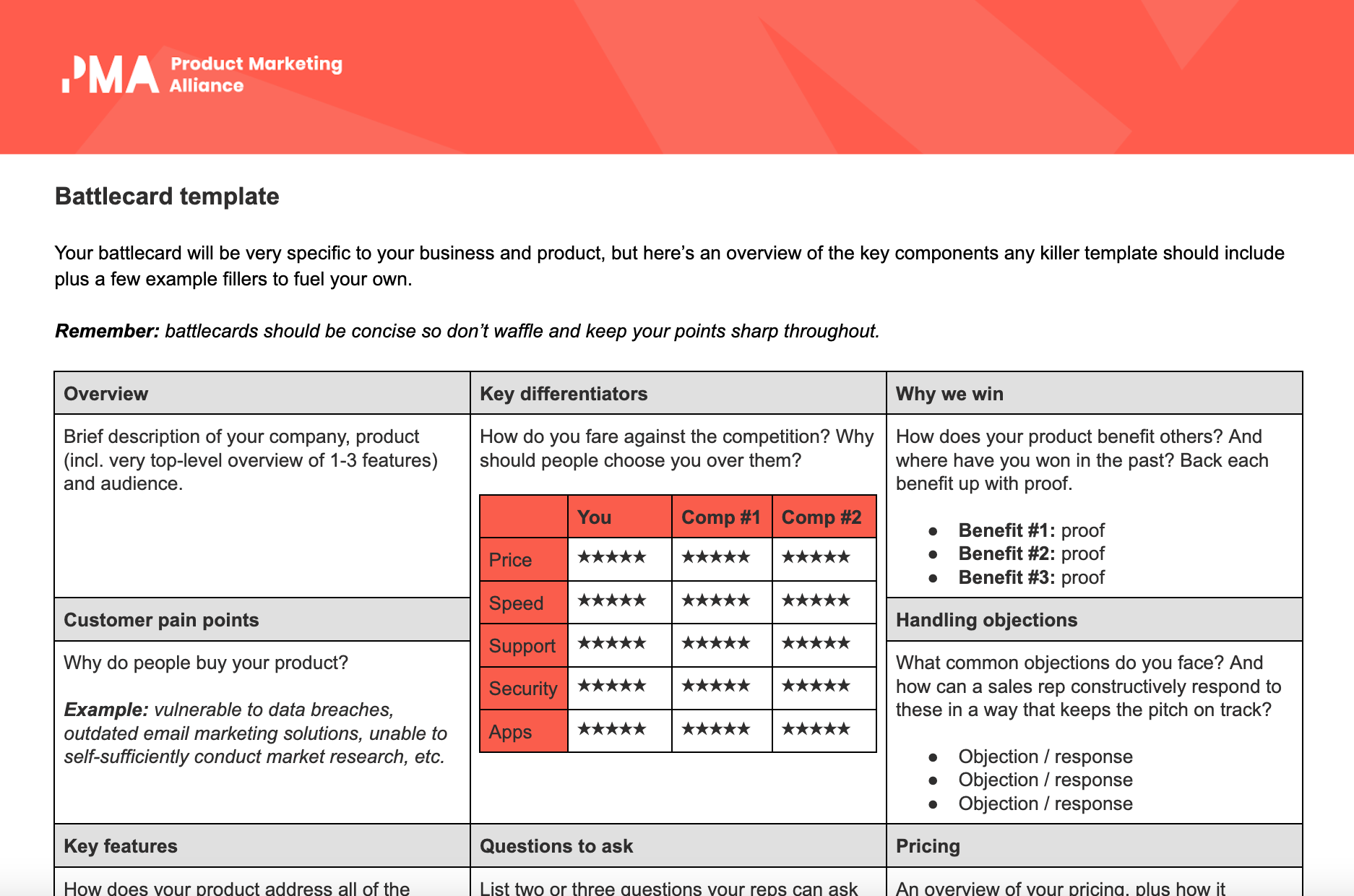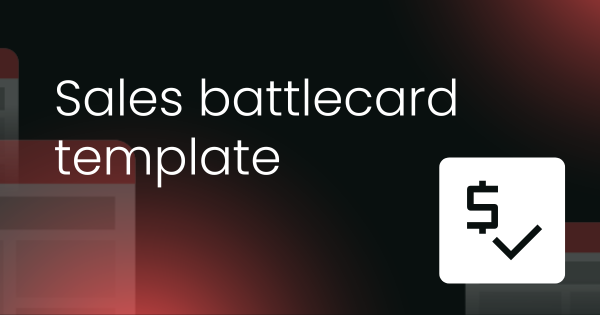What is a sales battlecard template?
Our sales battlecard template is an essential sales enablement tool in the arsenal of any product marketer.
It's a concise, actionable summary of your product, the market landscape, existing customers, and your competitors. Our battlecard template is designed to equip your sales team with quickfire responses to questions, objections, and competitive comparisons during the sales process.
Key components of a battlecard template:
- Company and Product Overview: A brief introduction to your company and product, highlighting key features and target audience.
- Customer Pain Points: Insights into the issues that drive customers to seek your solution.
- Key Features: Detailed features of your product that address customer pain points.
- Key Differentiators: A comparison of how your product stands out against competitors.
- Why You Win: Evidence and proof points showcasing your product’s benefits.
- Sales Tips: Guidance for sales reps on positioning your product effectively.
- Pricing Overview: Information on your pricing strategy compared to competitors.
- Relevant Customers and Testimonials: Success stories and third-party validations to bolster credibility.
How to use this template
Using the battlecard template effectively can empower your sales team to close deals faster and more efficiently. Here’s how you can make the most out of this valuable resource:
Step-by-step guide:
- Customize the overview: Start by tailoring the company and product overview to reflect your unique value propositions and target market.
- Identify pain points: Analyze common customer challenges and integrate these pain points into the template.
- Highlight key features: Clearly outline how your product’s features address the identified pain points.
- Differentiate from competitors: Use the key differentiators section to provide a clear comparison with competitors, highlighting your strengths.
- Provide proof points: Add compelling success stories and third-party validations to build trust and credibility.
- Equip sales reps with tips: Include practical tips and strategies for sales reps to use during customer interactions.
- Include pricing information: Offer a transparent pricing overview that compares your product with competitors.
- Update regularly: Ensure the battlecard is kept up-to-date with the latest product information, competitor analysis, and market trends.
By following these steps, you can create a powerful sales enablement tool that helps your team navigate competitive landscapes and close deals with confidence.
Download the template





















 Follow us on LinkedIn
Follow us on LinkedIn 

.svg?v=1461f28f41)